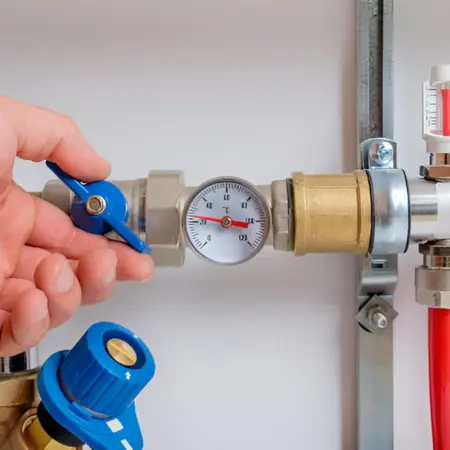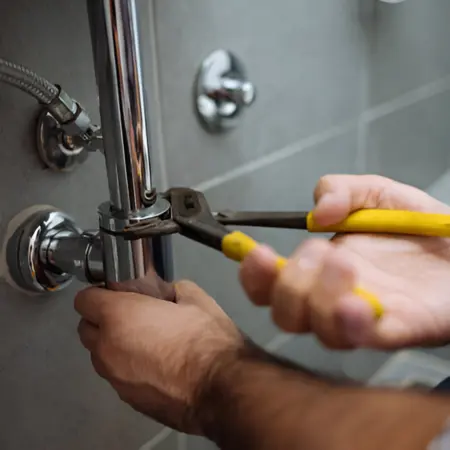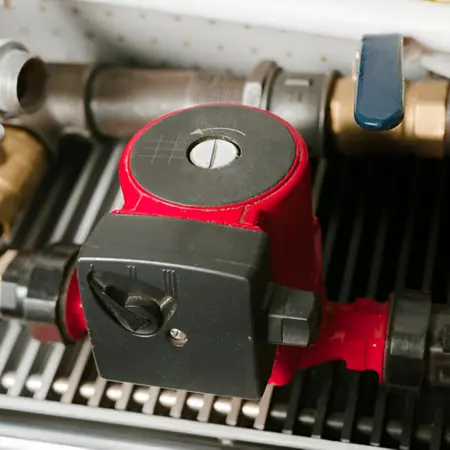Is your shower water pressure low?
It can be surely a frustrating start to your day.
Don’t worry—simple fixes can boost your shower pressure and increase water pressure in your shower fast!
Key Takeaways
- Low water pressure in your shower can be fixed with simple solutions.
- Mineral deposits and debris in your showerhead can block water flow.
- Clean your showerhead with vinegar or replace it if necessary.
- A water pressure regulator controls your home’s water pressure.
- If the regulator isn’t working, adjust or replace it with a plumber’s help.
- High-pressure and rain showerheads can boost water flow.
- Leaky pipes can cause low water pressure and need immediate repair.
- A shower pump can help increase water pressure in low-pressure systems.
- Use a pressure meter to check your home’s overall water pressure.
How To Increase Water Pressure In Your Shower: 7 Simple Solutions
There are simple ways to fix your shower pressure if it is low.
Here are seven easy solutions to boost the water flow.
Get your shower running strong again with these quick tips.
1. Check The Showerhead For Clogs
Mineral deposits and debris can build up in your showerhead over time.
This blocks the water flow and reduces pressure.
Remove the showerhead and soak it in vinegar and water for a few hours to clean it.
Use a small brush to scrub away any buildup.
If cleaning doesn’t help, it may be time to replace the showerhead.
When choosing a new showerhead, look for one designed to improve water pressure.
High-pressure showerheads often have smaller, thicker nozzles.
These nozzles help create a stronger water stream.
2. Inspect The Water Pressure Regulator
A water pressure regulator controls the amount of water pressure in your home.
If it’s not working properly, it can affect the pressure in your shower.
To check if it’s functioning, look for a pressure gauge on the regulator or use one to measure the pressure.
If the pressure is too low, you may need to adjust or replace the regulator.
It’s best to call a plumber for help if you’re unsure how to do this.
Contact us at OP Plumbing Hub for expert help.

3. Upgrade Your Showerhead
Some showerheads are designed to increase water pressure.
High-pressure or rain showerheads with pressurizing systems can provide a stronger flow.
Pressure-boosting showerheads help direct the water into smaller streams, increasing the pressure.
Look for brands that promote enhanced pressure features for the best results.
Choose one that also fits your style and bathroom design.
4. Fix Leaky Pipes
Leaky pipes are a common cause of low water pressure.
Even small leaks can cause a significant drop in pressure throughout your home.
To check for leaks, listen for dripping sounds or check your pipes for visible signs of damage.
If you find a leak, it’s important to fix it immediately.
You can seal minor leaks with plumbing tape.
For larger issues, call a plumber to repair and replace the damaged pipes.
Contact us at Leak Repair Services for high-quality services.

5. Install A Shower Pump
A shower pump can be a great solution if water pressure is consistently low.
It works by improving the water flow to your shower.
Consider installing a pump if you have a gravity-fed (ank-based) system.
It can also help if your water pressure is generally weak.
Different types of pumps are available, like positive and negative head pumps.
The right choice depends on your plumbing system.
A plumber can help determine the best pump for your setup.
6. Remove Flow Restrictors (Controllers)
Flow restrictors are small devices inside showerheads and faucets that limit water use.
This can also reduce water pressure.
To increase pressure, you can remove and replace these restrictors.
Most showerheads have a restrictor that can be easily taken out by unscrewing the head.
Be aware of water-saving regulations in your area before removing them.
It’s important to balance higher pressure with responsible water use.

7. Check Your Home’s Water Pressure
Sometimes, low water pressure isn’t just a shower issue; it could be a problem throughout your house.
You can use a pressure meter attached to a faucet to check your home’s water pressure.
If the pressure is low throughout your home, there may be an issue with the main water supply.
It could also be a problem with the pressure regulators.
If that’s the case, contacting a plumber to inspect the problem is best.
Conclusion
This article shares seven simple solutions to increase water pressure in your shower.
There are many ways to boost the flow, from cleaning your showerhead to installing a pump.
Try these tips to enjoy a stronger, more refreshing shower.
If the problem continues, don’t hesitate to call a plumber for help.
Contact us at OP Plumbing Hub for excellent services.
